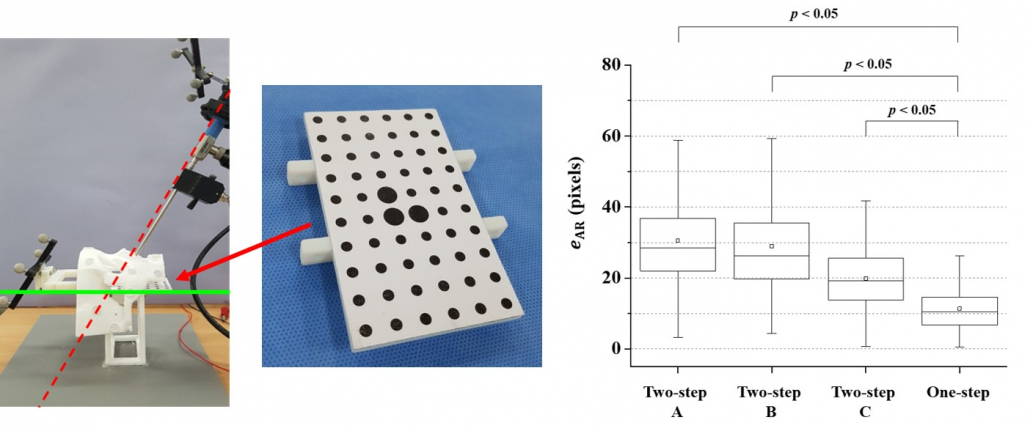Simultaneous Optimization of Patient-Image Registration and Hand-Eye Calibration for Accurate Augmented Reality in Surgery
This study aims at improving the accuracy and convenience of complex and tedious calibration steps for implementing augmented reality (AR)-based surgical navigation system. Conventionally, two calibration steps including “Patient-image registration” and “Hand-eye calibration” are performed separately for AR. Our method combines the two steps to form a step, resulting in better accuracy and convenience than the two steps.
Researchers
Seongpung Lee
Papers
Simultaneous Optimization of Patient-Image Registration and Hand-Eye Calibration for Accurate Augmented Reality in Surgery
Lee S, Shim S, Ha H, Lee H, Hong J
IEEE Transactions on Biomedical Engineering , doi: 10.1109/TBME.2020.2967802, Jan 2020
Fundings
Development of high-precision modular restoration system for fracture reduction and bone deformity correction
Ministry of Trade, Industry and Energy
Configuration for image-guided surgery using AR
● To implement AR, the AR-core relationship (red arrow) should be calculated in real-time.
● Two unknown relationships (blue arrows) should be solved for the AR-core relationship.
Conventional two-step calibration method

● For solving the two unknowns, patient-image registration and hand-eye calibration steps are performed separately.
● They requires different configurations from AR one, might yield inaccurate AR result when implementing AR because their results are only optimized in the given configuration.
Proposed one-step calibration method
● We propose a method combining the conventional two steps to form a step.
● To do that, it is necessary to calculate accurate AR-core relationships in terms of several different poses of endoscopes.
● With AR-core relationships and tracking information, two unknown parameters are optimized at the same time.
Calculation of AR-core relationship
Experiments and results
● AR errors of the target (layer with circle pattern) were measured.
● Proposed one-step method was compared with three different two-step methods and showed up to three times better accuracy.
Conclusion
● We dealt with accuracy and convenience issues of conventional two-step calibration method in image guided surgery using AR. A novel method combining the two steps to form a step was proposed.
● AR accuracy of the proposed method was measured in the field experiment, and the accuracy were compared with those of conventional methods. Up to three times better accuracy was observed in the proposed method.
● Some minor issues raise up in this method such as how to extract features with high accuracy and speed, how to calculate the AR-core relationship when face markers are detached.




